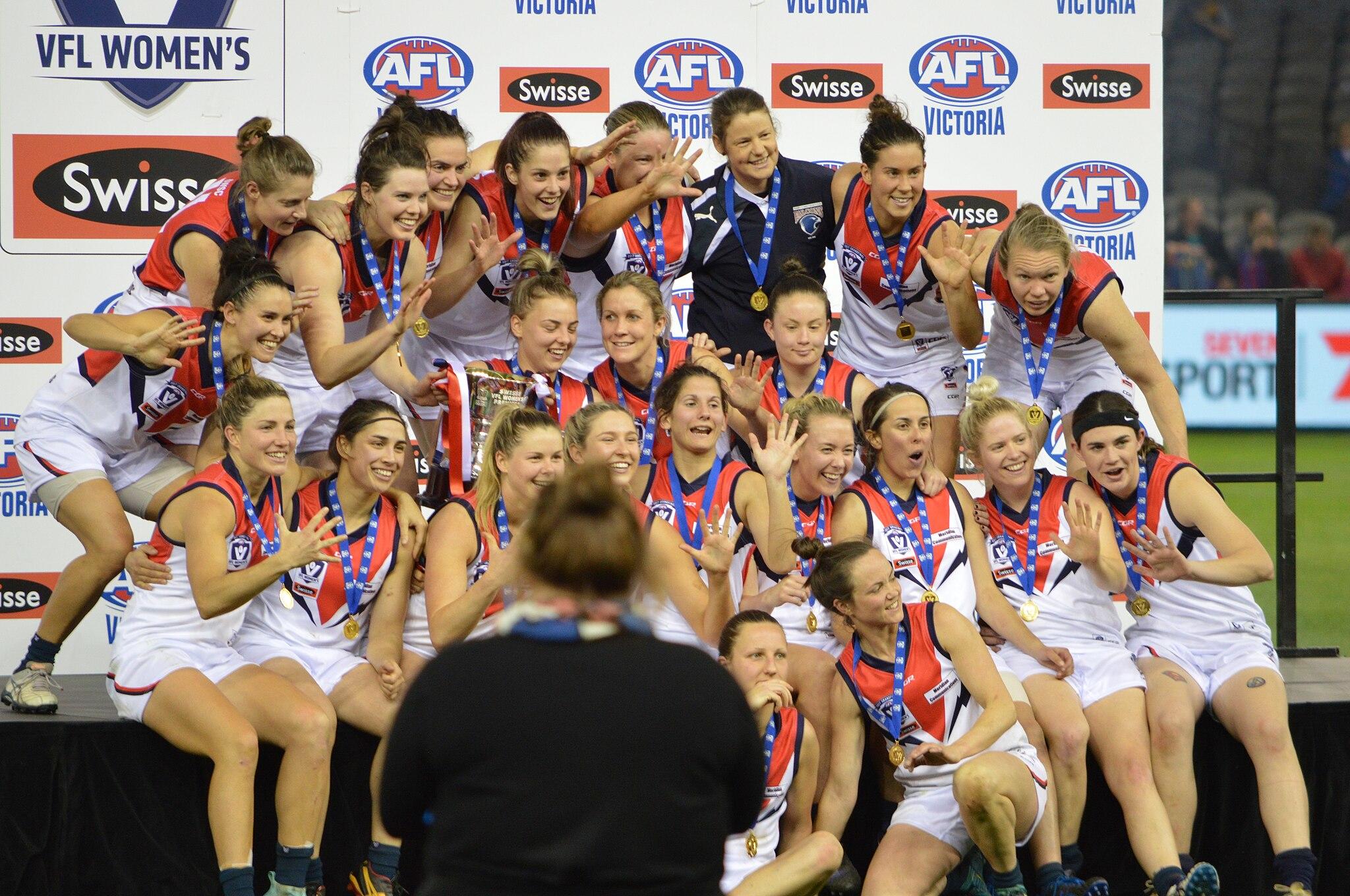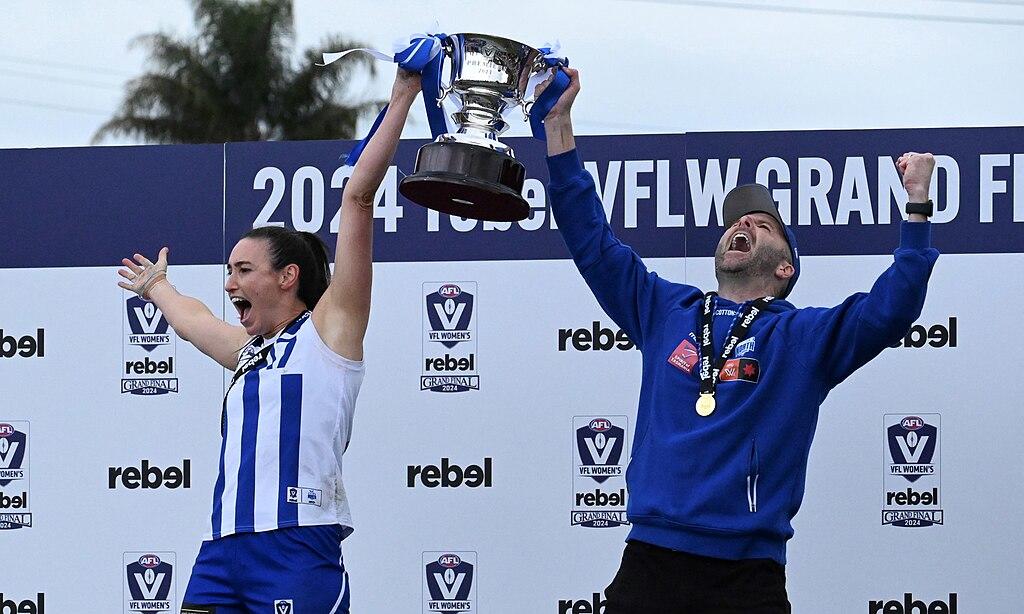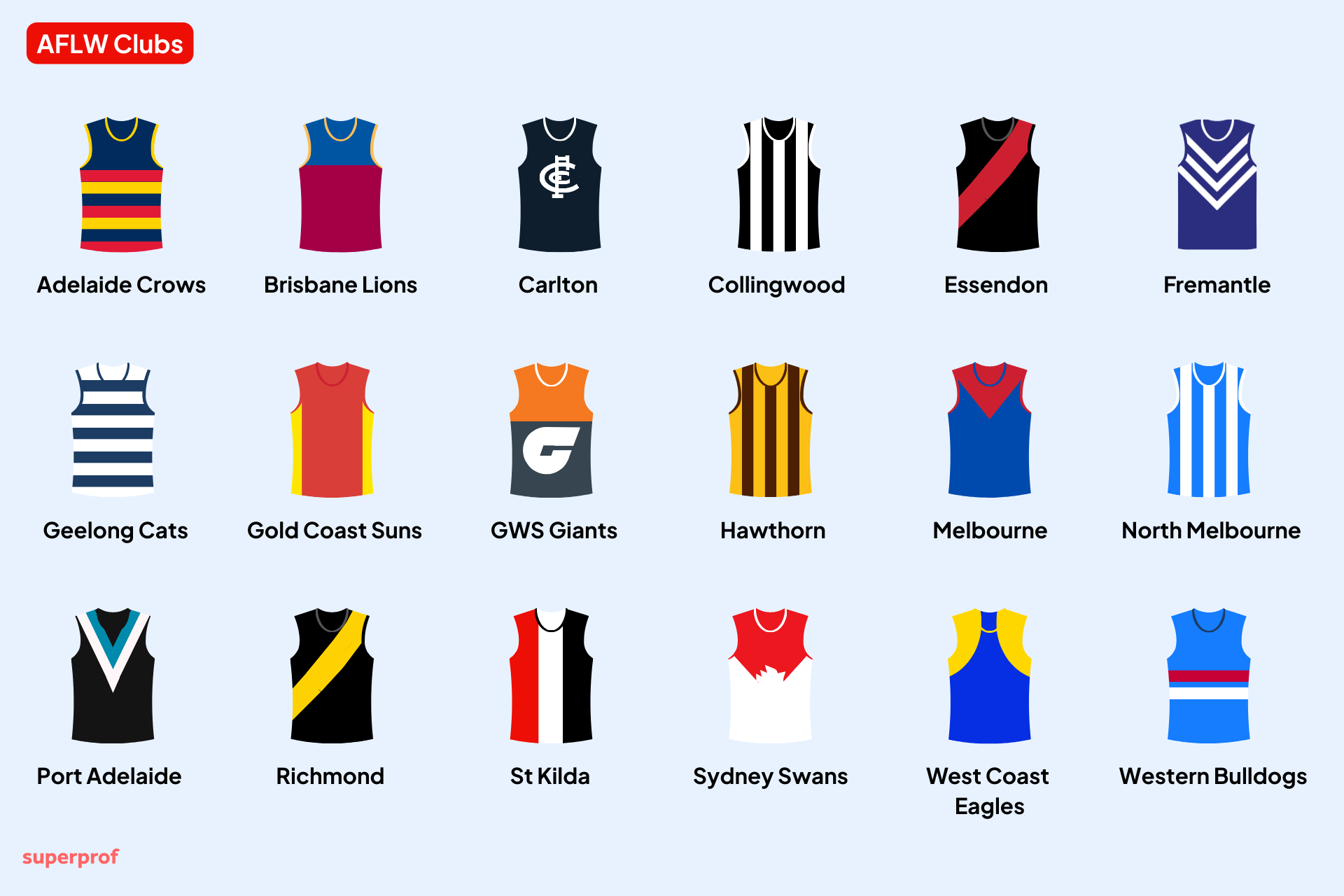If you're familiar with the AFL, you're likely aware of or even following the women's game. However, if you're new to footy, Aussie rules, or whatever you prefer, we need to catch you up.
Though the ALFW only dates back to 2017, the story of how it came to be starts over a century before that.
Let's see how women's footy matches went from charity events to a fully-fledged league striving for better gender parity.
1915
First Recorded Women's Match
The first recorded women's Aussie Rules football match in Western Australia during World War I, used to raise funds for charity
1940s
More Wars, More Charity Matches
Women's footy resurfaced during World War II for charity but remains informal, with societal norms and media coverage limiting women's participation.
1946-1980
The Decline
After the war, women's footy sees a decline. Matches are still held for charitable causes but treated as novelties, with minimal grassroots support and media coverage.
1981
VWFL Founded
Formation of the Victorian Women's Football League (VWFL), the first structured women's footy competition in Australia, paving the way for other leagues.
2000s:
Grassroots and Growth
Grassroots women's footy grows with the establishment of leagues like SAWFL, WAWFL, and QWAFL, increasing female participation.
2007
AFL Exhibition Match
First AFL clubs (Western Bulldogs and Melbourne Demons) field women’s teams in an exhibition match, marking a key moment in raising the profile of women’s footy.
2010
Review of Women's Football
Annual women's exhibition matches continue, and the AFL commissions a review of women's footy.
2010s
Momentum Builds
AFL begins investing in women’s footy. Exhibition matches gain momentum, with the 2014 series played at Etihad Stadium.
2015
Matches Broadcast
Women's matches are broadcast on free-to-air TV for the first time.
2017
AFLW Launches
AFL Women's (AFLW) inaugural season kicks off with 8 teams (Adelaide, Brisbane, Carlton, Collingwood, Fremantle, GWS Giants, Melbourne, and Western Bulldogs).
2018
10 Teams
AFLW expands to 10 teams with the addition of Geelong and North Melbourne.
2019
14 Teams
AFLW expands to 14 teams with Richmond, St Kilda, Gold Coast, and West Coast joining. The league adopts a conference format, facing criticism for unbalanced competition.
2022
18 Teams
AFLW reaches 18 teams, with all AFL clubs represented.
2023
Pay Increase
AFLW players negotiate a significant 94% pay increase, pushing toward professionalization, driven by increased sponsorship and media coverage.

The Origins of Women's Footy (1915-1945)
If you're completely new to the game, it's important to understand where footy comes from.
The first recorded women's Aussie Rules football match occurred in Western Australia during the First World War.
With many male football players enlisted in the army and fighting in the war, many sports were disrupted. This gave the women an opportunity to not only play sports but also raise money for charitable causes.
Women's footy was never really formalised in the same way as the men's game, and little effort was made to change this. Like many other sports at the time, women's participation was severely limited. Societal norms discouraged women from participating, and media coverage was often patronising.
The same pattern repeated during the Second World War, but it was business as usual for the women's game after the war, with men's sports taking centre stage and women being discouraged from getting involved.

Women's Footy After World War II (1946-1980)
After the Second World War, the number of women's footy matches was again in decline. Matches to raise funds for causes were less necessary as these causes were often war-related.
Women's matches still occurred with charitable goals. Still, they were often seen or treated as a spectacle rather than serious sporting competition.
Any media coverage was minimal or dismissive, and the matches were almost always seen as a novelty event rather than a showcase of the best footy players' skills.
Grassroots footy for girls was also incredibly limited. Though local teams and competitions would occasionally spring up, the lack of support or engagement made maintaining clubs and competitions incredibly difficult.
Formal Footy and The Victorian Women's Football League (1980-2000)
Women's footy made a significant step in 1981 with the foundation of the Victorian Women's Football League (VWFL).
This gave female footy players opportunities to compete in a structured competition with regular matches, finals, and a chance to win premierships.
The league grew into a more considerable competition over the years, attracting more players and more interest.
This was the first organised women's competition in Australia, and it helped lay the foundation for other formal women's leagues nationwide.
However, like many examples of women's sports, the VWFL still faced challenges, including limited resources and the struggle for recognition and support.
There was also very little media coverage, and sponsorships were rare. The VWFL largely survived thanks to the hard work of players, coaches, and volunteers.

Grassroots Women's Footy and Exhibition Matches (2000-2010)
During the 2000s, women's footy continued to develop, albeit at a predominantly grassroots level. Similar leagues to the VWFL were established across Australia, such as the South Australian Women's Football League (SAWFL), the West Australian Women's Football League (WAWFL), and the Queensland Women's Australian Football League (QWAFL).
Over time, the number of women participating in Aussie rules increased and grassroots leagues, especially at junior and community levels, meant that more girls were growing up playing footy, which would lead to more players at the senior level.
By the end of the decade, tens of thousands of women were playing footy across the country, but the women's game was still considered an amateur sport.
The game remained largely community and volunteer-driven, and clubs were important parts of their local communities.

However, this interest started to catch the attention of the AFL, which started staging exhibition matches. These matches helped raise the sport's profile, culminating in one of the milestone moments in women's footy history.
In 2007, the Western Bulldogs and Melbourne Demons became the first AFL clubs to field women's teams in an exhibition match. This was the first time that any AFL club had actively promoted the women's game in this way.
The 2007 match was a success, and annual exhibition matches were scheduled. At this point, the AFL really started to pay attention and decided to commission a review of women's football in Australia.

Momentum Builds in Women's Footy to the AFLW (2011-2016)
Between 2011 and 2016, the AFL started investing in women's footy. This was really the first time that women's footy was backed by the men's game in a significant way, which is quite surprising when you consider that the rules of footy had been formalised for over a century.
After all, the interest was there. The 2010 review into women's football included recommendations for developing a national women's league by 2020, but, as we'll see, this was brought forward because there was enough interest and support for women's football.
The 2014 Exhibition Series was played at the then Etihad Stadium (Docklands Stadium). In 2015, the second of two women's exhibition matches was broadcast on free-to-air TV.
Following these events' momentum and success, the AFL brought forward the timeline for what would become the AFLW. In 2016, the AFL announced that the women's competition would start the following year, three years earlier than planned!
The Inaugural AFLW Season (2017)
In 2017, the AFL Women's (AFLW) had its inaugural season. This was a monumental moment, as it marked the first national, semi-professional league for female players, signifying a historic shift in Australian sport.
between the first recorded women's footy match and the foundation of a national league (AFLW)
The league was backed by the AFL, and there was clear public support for women's footy.
The AFL granted licences to eight AFL clubs. The Victorian Football League (VFL), the precursor to the AFL, also started with eight teams
The original eight teams for the AFLW were:
- Adelaide Crows
- Brisbane Lions
- Carlton
- Collingwood
- Fremantle
- Greater Western Sydney Giants
- Melbourne
- Western Bulldogs
However, unlike the VFL, these teams were chosen to offer better coverage of Australia and give the competition a more national skew.
The first match between Collingwood and Carlton was held on February 3, 2017. The match was originally going to be played in the 7,000-capacity Olympic Park Oval, but the venue was changed to Ikon Park in Melbourne, with a 22,000-spectator capacity.
The turnout was an astounding 24,500 people, with thousands unable to enter the stadium because it was at capacity, setting the stage for the AFLW's future success.
The Expanding AFLW (2018-2020)
The AFLW quickly expanded its second season. With the addition of Geelong and North Melbourne, the league went from eight to ten teams.
However, the expanding league had issues. The competition format was criticised for being too short, and player pay and working conditions were an issue. With many AFLW players still working full-time jobs or studying, the league was held back by its semi-professional nature.
Fan engagement and media coverage was also good. With initiatives like free entry for most matches, fan support helped keep attendance figures high. The media continued to broadcast more matches on both free-to-air TV and through subscription services like Fox Footy.
In 2019, the league expanded again to 14 teams. Richmond, St Kilda, Gold Coast, and West Coast Eagles were added, and the league now better represents all of Australia.
The league's size meant that it was split into two conferences, which was criticised as unbalanced.
The AFLW Expands to 18 Teams (2021-2024)
The AFLW expanded to 18 teams in 2022, which meant that every AFL club was represented in the competition. The players started negotiating better wages and conditions.
2023, there was a significant pay increase, with AFLW players securing an average 94% pay increase. This was helped by increased sponsorship and media coverage for the league.
By this point, the AFLW was one of Australia's top women's sports leagues, alongside netball and cricket.

The Future of the AFLW (2025 and beyond)
So, where does that leave the AFLW now? The league's trajectory in less than a decade has been astounding, but many of the criticisms levelled at it from its inception still remain.
There are ongoing efforts to achieve better equality regarding participation, pay, and scheduling with the AFL.
The pay gap is a particularly thorny issue for the league. Still, with increasing public and corporate support for the competition, the path towards professionalism looks increasingly likely, as does promising growth for the league and grassroots women's footy.
So while the AFLW's history is relatively short, its rapid growth shows that there's been interest in the sport for decades if only the first season of a national women's football league had taken place earlier.
















